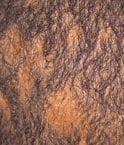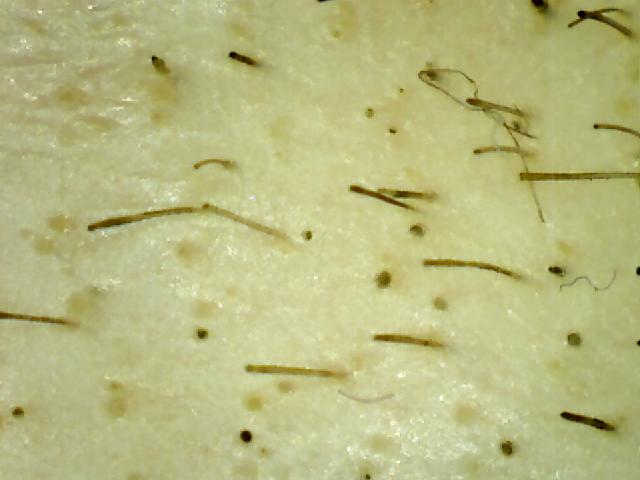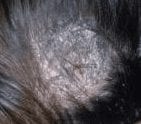Ringworm
Scalp Ringworm or Tinea Capitis Scalp RIngworm (syn. Dermatophytosis Capitis) or Tinea Capitis is a fungal infection that affects the hair and scalp. Ringworm may affect other regions of the body however this paper will discuss only the hair and scalp. The term ringworm is used as this highly contagious condition may present symptoms such as a ringed patch. However, ringworm does not involve a worm.
Two main types of infection:
i) Ectothrix These fungi invade hairshafts beyond the skin level, resulting in breakage at skin level and the characteristic ‘black dots’ symptom.
ii) Endothrix These fungi invade the pilo-sebaceous follicles causing serious inflammatory skin conditions + hair losses/breakage.
An infected scalp will present as:
i) Scaly patches with hair loss or broken hair shafts.
ii) Extensive lesions which may develop into a rash.
iii) Kerion – a swollen mass discharging pus onto the scalp. May be painful. Alopecia (baldness) may develop. Staphylococci (bacteria) may co-exist. The lymph nodes of the neck can also become swollen and tender. Fever is possible though rare.
Caution: Symptoms of hair loss (when lesions are circumscribed) may be confused with alopecia areata.
Anthropophilic fungi (humans being the natural hosts):
i) Microsporon audouini
may be inculcated in epidemics with children (transmitted by shared hats combs brushes towels and through contaminated barber’s instruments etc). Symptoms may include localised erythema in circumscribed areas (maximum diameter 5 cm) which soon fades to leave superficial scaling with broken brittle twisted grey-white hair stumps measuring approx. 3 mm above the scalp.
Occasionally kerion results. Kerion may be caused by a build-up of either large or small spored ringworm bacteria in the hair follicles. This presents as purple/red raised boggy swellings discharging pus. Any consequential baldness is usually temporary.
ii) Trichophyton tonsurans, T. sulphureum, T. violaceum –(endothrix trichophyta)
Each presents as black dots within the skin – caused by hairshafts broken at or below skin level. Early symptoms may mimic pityriasis simplex (‘dandruff’) but a more vigorous inflammatory reaction may produce follicular pustulation and possibly Kerion. In the UK this infection is most commonly due to trichophyton tonsurans.



Zoophilic fungi (other animals being the natural hosts).
The fungus can be transferred to humans from animal hosts e.g. cats (kittens especially), dogs, cows etc – These animals habitually carry the fungus but are not adversely affected by it. This explains why it is most commonly seen among farming populations. Children are particularly at risk as the disease is highly contagious. Farm workers are also vulnerable. The disease usually presents as actively inflammatory lesions. These infections are commonly due to M. canis, or T. verrucosum. The early symptoms also include circumscribed scaly patches with lustreless broken twisted hair stumps. The infection may lead to severe inflammatory changes presenting as erythematous swollen crusty patches. Kerion may follow.
Geophilic fungi
M. gypseum contracted by humans from the soil.
Things to do:
Avoid direct contact with animals showing symptoms e.g. scaly, patchy skin.
Treatment may include:
i) a fungicidal or antibiotic cream for local application and aural medication.
ii) Kerion will require corticosteroid therapy.
Ringworm is a general term used to refer to a number of different contagious fungal infections of the skin, scalp or nails. The condition is known as ringworm because it can leave a ring-like red rash on the skin. It does not have anything to do with worms.
Common Condition
Ringworm is a very common condition. It’s estimated that between 10 and 20% of all people will experience at least one fungal infection during their lifetime.
Scalp ringworm is most common in pre-pubescent children and is relatively rare in adults. This is because during puberty a chemical change occurs in the glands in your scalp, and these changes make your scalp less attractive to fungi.
Children who live in urban environments, particularly Afro-Caribbean children, are most at risk of getting scalp ringworm. The reason that the condition is more common in urban environments is that when there is a large number of people living in close proximity, it gives ringworm more of an opportunity to spread from person to person. However, it is uncertain why Afro-Caribbean children are more at risk.
Body ringworm
Body ringworm can affect people of all ages. However, the exact number of cases that occur in England each year is unknown because many people treat body ringworm using over-the-counter (OTC) medication and they do not report the symptoms to their GP.
Prognosis
Most cases of ringworm are mild and can be successfully treated using anti-fungal medication. Serious complications such as permanent hair loss or scarring are rare.
Ringworm is contagious, so it’s important to take basic hygiene measures in order to prevent the spread of infection. These include not sharing towels or clothes. See the prevention section for more details about this.

